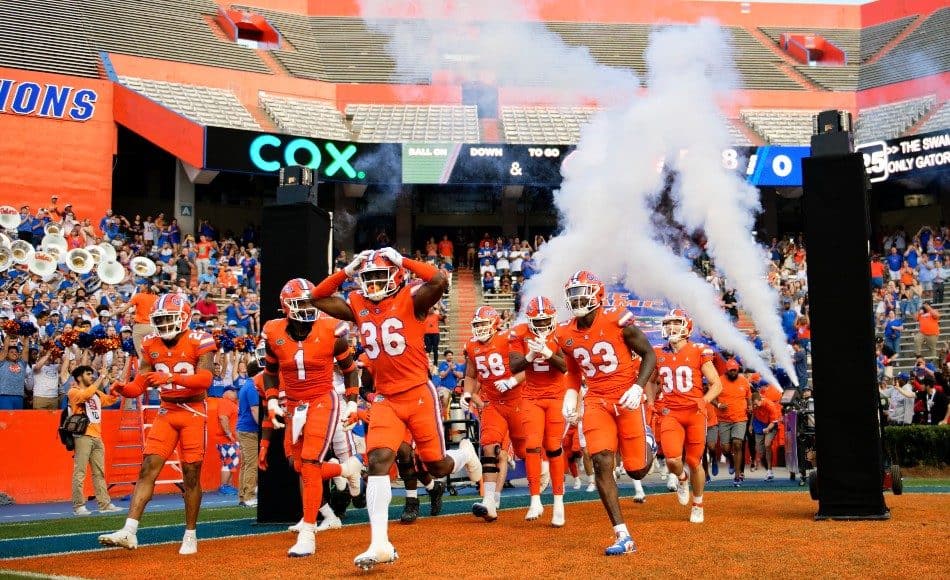If the NIL market feels bewildering right now, there’s a reason for that. There is a lot of information out there about the marketplace, but no one has it all. It’s split up, quite unevenly at that, among a lot of different parties.
In economics and legal jargon, there is information asymmetry. There is an entire field of study of how the different amounts of information that different parties have affects outcomes in contracts and markets, and how all that goes is beyond the scope of this piece (and beyond my expertise).
That said, it’s not too hard to grasp the basics. Start by thinking about how the market for pro athletes works. There is plentiful public information.
There is a well defined pool of buyers (the pro teams) and a fluid but decently defined pool of sellers (athletes good enough to play on the pro level). Teams’ positions in relation to salary caps are known, as are minimum and maximum contract levels. Teams’ personnel needs are also generally known. Agents release contract information to tout their ability to negotiate for their clients, and teams release terms to try to prove to fans that they’re not being taken for a ride.
In the end, most everyone knows most everything. Teams still have some power in holding back precisely how they prioritize filling their needs and how much they want to spend on any given position, and players may have location preferences that change how much they’re willing to accept to play for a given team. In the end, though, there is little information asymmetry.
NIL is a completely different kind of marketplace. Almost no information is publicly known, and it’s likely that a lot of the information that’s out there is either incomplete, misleading, or flat-out wrong. Even with the famous up to $8 million-over-three-years contract that The Athletic got a hold of, they got it under conditions that the player wouldn’t be known (though he’s been since guessed with high likelihood) and not all aspects of the deal would be reported.
Just think about how the many parties involved have reason to share or withhold information.
Current players
Each player knows what he or she is getting, and the players talk to each other about it. They talk to prospects about it too as a recruiting tool, giving them an idea as to what they might expect.
There may be reasons why they could give incorrect or incomplete information out. It could go either way, from trying not to damage relationships with teammates by downplaying their income to playing it up to boast to rivals or recruits. Players are, however, susceptible to having estimates of their NIL take discussed by their coaches as a way of messaging to recruits.
Collectives
Most collectives are still in the building-up phase, so many of them are still selling potential more than anything else. It pays for them to play things up and give the most optimistic story they can to try to juice subscriptions.
They don’t have much reason to talk about individual deals, however. Current athletes seem content for now without their exact figures being public. If a collective really is in the building-up phase, its totals might not be that impressive anyway.
Plus if a collective talks about deals it has closed with recruits who haven’t signed letters of intent yet, that could make them run afoul of the meager NCAA rules about NIL as an inducement to play at a school — should the NCAA ever actually figure out a way to enforce them without being sued into oblivion.
Recruits
Recruits get information from current players and from whatever offers are being conveyed their way. Some also work with agents or lawyers, which is a good idea since there are many devils the details of NIL contracts. The words “up to” are undoubtedly doing some heroically heavy lifting in places.
Prospects don’t have much to gain from accurate information being out there. They have a better chance of playing schools off of each other to increase their takes if everything is getting inflated.
Agents
And speaking of those agents, they also benefit from the rumors out there of implausibly high numbers. The bigger those fictional figures, the easier their jobs get.
Coaches
They learn what their players are getting one way or another, which is information they need to help manage the egos on their rosters. They’re officially not allowed to be involved in the NIL process, but let’s just say they benefit from a lack of informational asymmetry between themselves and their schools’ collectives.
The market is young
The thing we all have to remember is that NIL is still early days. It’s been more than a year now, but the landscape is still developing quickly.
For instance, a lot of collectives haven’t fully come online yet. They’re still trying to gain enough income to make a material difference, even if that difference is simply to keep the best current players from transferring away. We don’t even know if the collective model will work indefinitely everywhere. It may be that the collective world is subject to feedback loops where the biggest ones get bigger and the smaller ones end up dying out. We just don’t know yet.
There can’t help be information asymmetry when good amounts of the market are still cloaked in unknowns on top of all of the conflicting incentives. Once we’re a few years into the NIL era, it’ll be possible for everyone to have more good information simply from observing the how the market plays out.
But as long as everyone involved is holding different cards and they don’t have a compelling reason to tip their hands to everyone, the NIL market will continue to be a minefield of incomplete and downright bad information.


